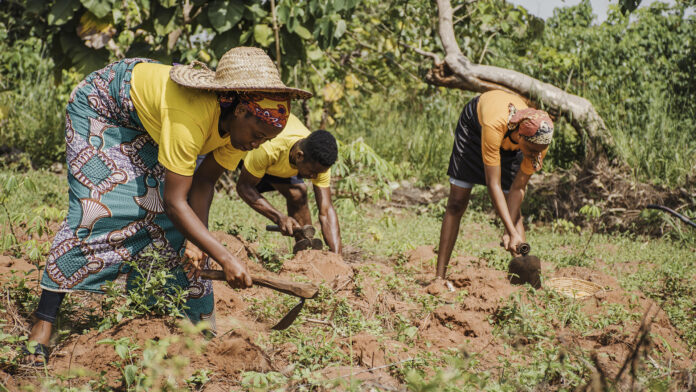In a globalized world, it may seem tempting to assume that every country should be able to produce every agricultural product. But reality teaches us otherwise. Different climatic conditions, soil conditions and resources make certain products much more difficult or expensive to grow in some countries than in others. These differences have a direct impact on the carbon footprint and sustainability of agricultural production worldwide.
Climatic diversity and agricultural specialization
The world map is characterized by diverse climate zones, from tropical rainforests to polar ice deserts. This diversity creates the basis for a wide range of agricultural products. However, not every country is equally suitable for growing every product.
In countries with a temperate climate, such as France or Germany, cereals such as wheat and barley are well suited. The moderate temperature and sufficient rainfall create optimal conditions for cultivation. Conversely, countries with arid climates, such as the Sahara, are less suitable for such crops as they do not receive enough rainfall to ensure a successful harvest.
Energy consumption and carbon footprint
Energy consumption is a decisive factor in agricultural production. This includes the energy required for irrigation, the operation of machinery, the transportation of goods and much more. In countries with scarce resources or expensive energy, the production of certain products therefore becomes much more expensive and has a negative impact on the carbon footprint.
One example of this is the cultivation of avocados. This fruit requires a considerable amount of water and is often grown in regions with semi-arid or arid climates, such as Mexico or Chile. Irrigation of these plantations can lead to considerable water consumption, especially in regions where water is already scarce. The transportation of avocados to countries with a high demand, such as Europe or the USA, also contributes to carbon emissions and has a negative impact on the carbon footprint.
Read also: Farmers’ protests in Europe
Regional adaptation and sustainable agriculture
In order to overcome the challenges associated with the climate footprint of agricultural production, greater regional adaptation is required. This means that countries must adapt their agricultural practices to local climatic conditions and resources.
One promising approach is the promotion of agroforestry, in which agricultural crops are grown in combination with trees. This method can help to conserve soil, improve soil moisture and promote carbon sequestration, which contributes to an overall improved carbon footprint.
Furthermore, the promotion of locally grown and seasonal products is an important step towards sustainability. By avoiding transportation over long distances, CO2 emissions can be significantly reduced.
Conclusion
Overall, it is important to recognize that not every country is suitable for every agricultural product. The carbon footprint and sustainability of agricultural production depend heavily on local climatic conditions and resources. Increased regional adaptation and the use of sustainable cultivation methods are crucial to minimizing the impact of agricultural production on the climate and ensuring food security in the long term.
Sources:
1. “Climate Change and Agriculture.” FAO. https://www.fao.org/climate-change/en/
2 “The Carbon Footprint of Avocado Toast.” Yale Environment 360. https://e360.yale.edu/features/the-carbon-footprint-of-avocado-toast-its-not-good
3. “Agroforestry.” World Agroforestry. https://www.worldagroforestry.org/agroforestry-definition-and-background



